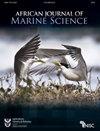轮采对南非东海岸开普岩牡蛎 Striostrea margaritacea 大小组成的影响
IF 1.4
4区 生物学
Q3 MARINE & FRESHWATER BIOLOGY
引用次数: 0
摘要
南非夸祖鲁-纳塔尔省(西印度洋)北海岸对开普岩牡蛎 Striostrea margaritacea 的商业捕捞采用 4 年轮作周期,在四个捕捞区中,每个捕捞年之后有 3 个休渔年。我们分析了报告的捕捞努力量和渔获量信息,以及 18 年来(2003 年 2 月至 2020 年 2 月)收集的独立于渔业的牡蛎大小组成数据,以研究轮捕的可持续性。在研究期间,总捕捞努力量和渔获量有所下降,但平均每次出海采集的牡蛎数量有所增加。近年来出海次数减少的原因是报告不完整和捕捞地点的逐渐丧失。使用广义线性混合模型估算了牡蛎平均大小与捕捞方法(潜水员和潮间带采集者)、捕捞区、4 年轮换周期和在捕捞区停留的月数有关的趋势。牡蛎的平均大小沿海岸线由北向南增加。潜水员在新开发的深礁上捕获的牡蛎最初比潮间带采集者捕获的大。牡蛎的平均大小在为期 1 年的捕捞期逐月减小,但在 3 年的休渔期又恢复到捕捞前的大小。结果证实,目前的轮捕策略非常适合牡蛎生物学,在目前的捕捞水平下是可持续的。需要改进对捕捞努力量和渔获量的报告,以核实该渔业的长期时空趋势。需要与利益相关者进行更有效的沟通,以解决潜在的用户冲突。本文章由计算机程序翻译,如有差异,请以英文原文为准。
Effect of rotational harvesting on the size composition of Cape rock oysters Striostrea margaritacea on the east coast of South Africa
A commercial fishery for the Cape rock oyster Striostrea margaritacea along the north coast of KwaZulu-Natal, South Africa (western Indian Ocean), follows a 4-year rotational cycle, with each harvest year followed by 3 fallow years across four harvest zones. We analysed reported harvesting effort and catch information, and fishery-independent oyster size composition data collected over 18 years (Feb 2003-Feb 2020), to investigate the sustainability of rotational harvesting. Total harvesting effort and catches declined over the study period, but on average, the number of oysters collected per outing increased. Fewer outings in recent years were attributed to incomplete reporting and a progressive loss of access to harvest sites. Generalised linear mixed models were used to estimate trends in oyster mean size in relation to fishing method (divers and intertidal collectors), harvest zone, 4-year rotational cycles, and months spent in a zone. Oyster mean size increased from north to south along the coast. Oysters caught by divers on newly exploited deeper reefs were initially larger than those caught by intertidal collectors. Mean oyster size decreased monthly during 1-year harvest periods but recovered to pre-harvest size over 3 fallow years. The results confirmed that the current rotational harvest strategy is well-suited to oyster biology and is sustainable at the present level of effort. Improved reporting on harvesting effort and catch are required to verify longer-term spatiotemporal trends in this fishery. More effective stakeholder communication is needed to resolve potential user conflict
求助全文
通过发布文献求助,成功后即可免费获取论文全文。
去求助
来源期刊

African Journal of Marine Science
生物-海洋与淡水生物学
CiteScore
2.60
自引率
16.70%
发文量
17
审稿时长
6-12 weeks
期刊介绍:
The African (formerly South African) Journal of Marine Science provides an international forum for the publication of original scientific contributions or critical reviews, involving oceanic, shelf or estuarine waters, inclusive of oceanography, studies of organisms and their habitats, and aquaculture. Papers on the conservation and management of living resources, relevant social science and governance, or new techniques, are all welcomed, as are those that integrate different disciplines. Priority will be given to rigorous, question-driven research, rather than descriptive research. Contributions from African waters, including the Southern Ocean, are particularly encouraged, although not to the exclusion of those from elsewhere that have relevance to the African context. Submissions may take the form of a paper or a short communication. The journal aims to achieve a balanced representation of subject areas but also publishes proceedings of symposia in dedicated issues, as well as guest-edited suites on thematic topics in regular issues.
 求助内容:
求助内容: 应助结果提醒方式:
应助结果提醒方式:


